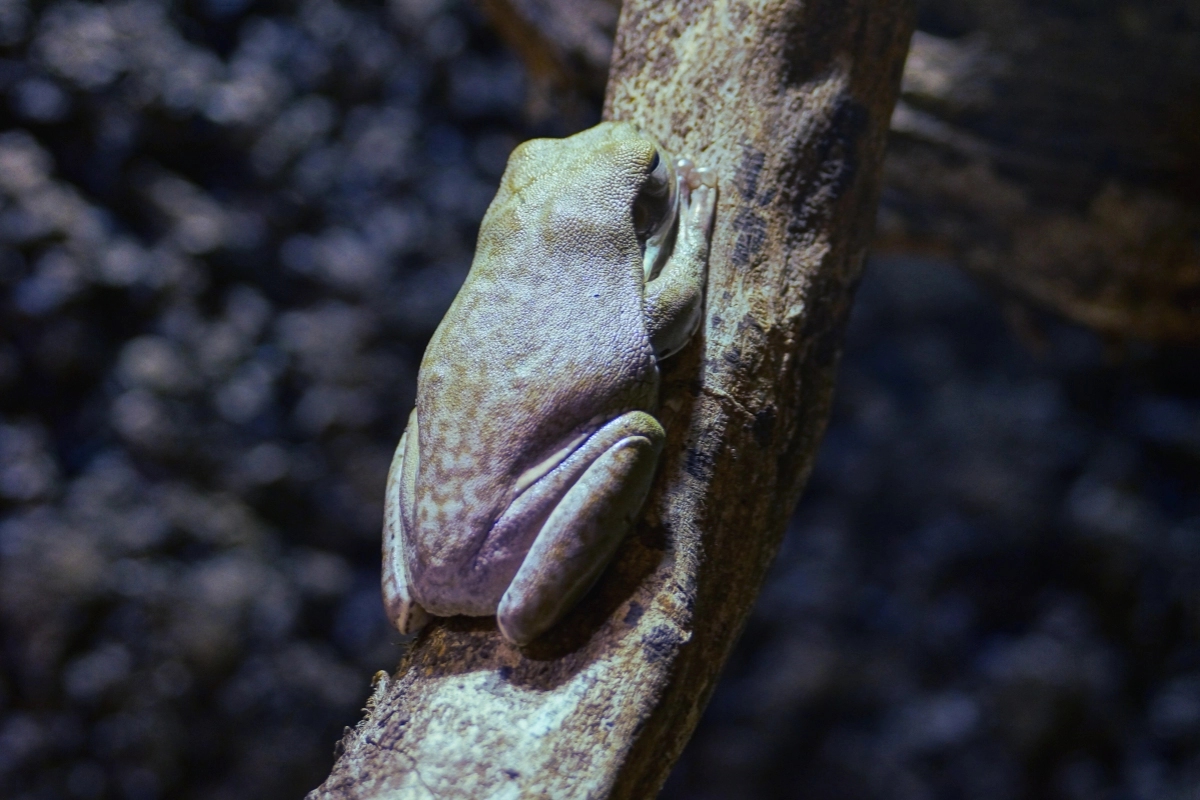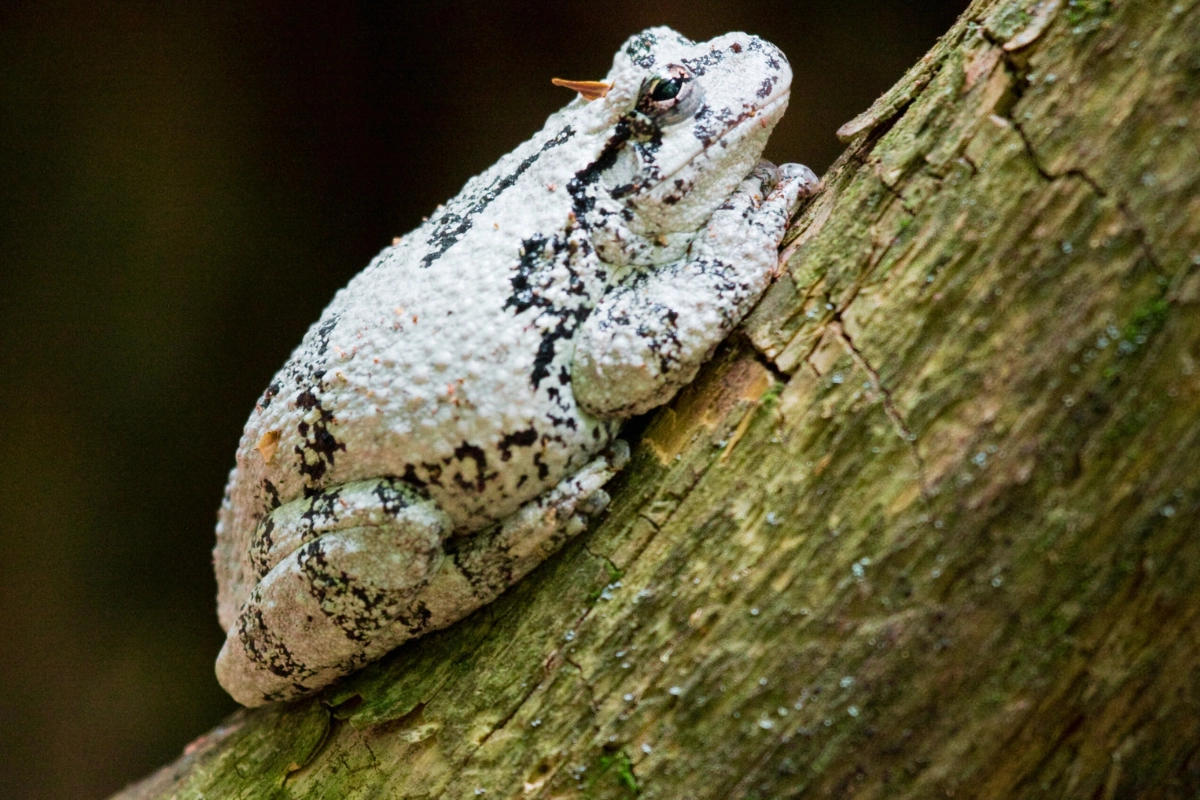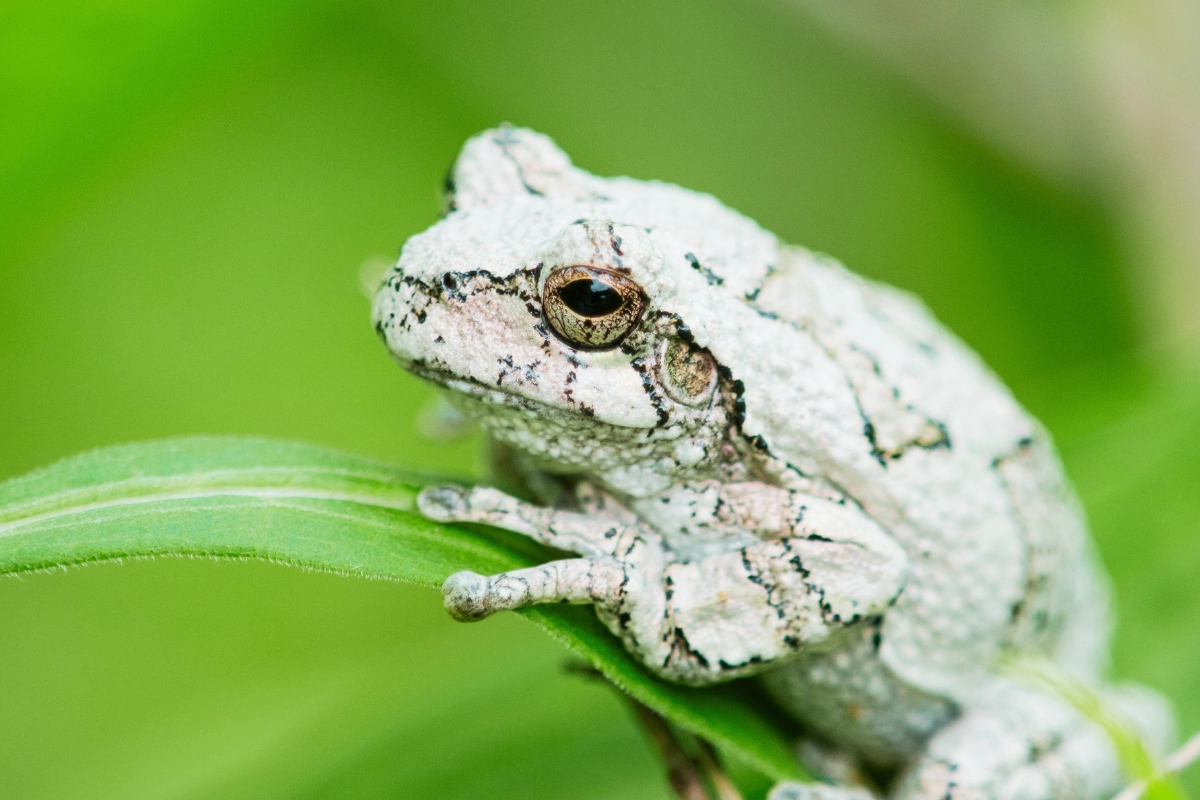Caring for a white tree frog is straightforward, but these friendly frogs have specific needs to thrive. In my experience, a 20-gallon tank provides enough space for their natural hopping, and keeping humidity around 50-60% is essential. I use a gentle misting system to maintain moisture and add a shallow water dish they can easily access for soaking. The temperature should be around 70-85°F, with a UVB light for about 10-12 hours a day to mimic their natural day-night cycle. Feeding them gut-loaded insects like crickets and occasional waxworms ensures they get the nutrients they need. Proper care helps these charming frogs stay healthy and vibrant.
In White Tree Frog Care 101: Keep Your Frog Thriving, I’ll guide you through the essentials of raising a healthy, happy White Tree Frog. By following these steps, you’ll create an environment where your frog can truly flourish, from maintaining ideal humidity levels to providing the right diet. I’ve written this guide because I believe every White Tree Frog deserves a home that meets its natural needs, and I want to help owners experience the joy of seeing their frog thrive. Proper care leads to a longer life, vibrant colors, and an active, content pet.
To care for a White Tree Frog effectively, here’s what you’ll need:
- 20-gallon tank for ample space
- Humidity gauge to keep levels between 50-60%
- Spray bottle or misting system for regular humidity maintenance
- UVB light to simulate natural daylight for 10-12 hours daily
- Shallow water dish for soaking and hydration
- Thermometer to monitor temperatures between 70-85°F
- Gut-loaded insects (like crickets and occasional waxworms) for nutrition
- Substrate like coconut fiber or sphagnum moss to retain moisture and provide comfort

Step 1: Set Up the Tank Environment
Creating a comfortable, safe environment is the first essential step in caring for your White Tree Frog. Start with a 20-gallon tank to provide adequate space for movement and exploration. Make sure it’s well-ventilated, as White Tree Frogs need fresh air circulation to thrive. Place a secure lid on the tank, as these frogs can climb and might try to escape if there’s an opening. Next, set up a humidity gauge inside the tank to keep levels stable between 50-60%, replicating the natural humidity of their native habitats. I find using coconut fiber or sphagnum moss as a substrate works best for retaining moisture, creating a comfortable and natural feel for your frog.
Step 2: Regulate Temperature and Lighting
White Tree Frogs need a controlled temperature to stay healthy and active, so in this step, we’ll focus on creating the right climate inside their tank. Use a thermometer to monitor the temperature, which should stay within the range of 70-85°F. Place a heat lamp on one side of the tank to create a temperature gradient, allowing the frog to move between warmer and cooler areas as it needs. For lighting, install a UVB light to simulate natural sunlight for about 10-12 hours each day. This light not only supports your frog’s natural circadian rhythm but also helps it synthesize essential vitamins. Remember to turn off the light at night to let your frog experience a natural day-night cycle, which is key to its health and wellbeing.
Step 3: Maintain Proper Humidity Levels
Humidity is crucial for White Tree Frogs, as it mimics their natural environment and keeps their skin healthy. Use your humidity gauge to ensure levels remain between 50-60% at all times. To maintain this range, I recommend misting the tank at least once daily with a spray bottle or using an automated misting system for convenience. Be careful not to over-saturate the tank, as too much moisture can lead to bacterial growth. The substrate, like coconut fiber or sphagnum moss, will help retain moisture, creating a humid but safe environment. If the air becomes too dry, consider misting a second time or adding a small bowl of water, which can help maintain humidity passively. Proper humidity supports your frog’s respiratory health and helps it stay hydrated.
Step 4: Set Up a Water Dish for Soaking
White Tree Frogs need a clean, shallow water dish to soak and stay hydrated. Choose a dish that is wide enough for your frog to sit comfortably in but not too deep, as they aren’t strong swimmers. Place the dish in an accessible area of the tank, and make sure the water level is shallow to prevent accidental drowning. I recommend using dechlorinated water or bottled spring water, as tap water can contain chemicals harmful to frogs. Change the water daily to prevent bacterial buildup and ensure a fresh, safe soaking area. This step not only provides hydration but also helps keep your frog’s skin moist and healthy. A well-maintained water dish plays an important role in your frog’s overall health and comfort.
Step 5: Provide a Nutritious Diet
A balanced diet is essential to keep your White Tree Frog healthy and active. Feed your frog gut-loaded insects like crickets, which should be dusted with a calcium and vitamin supplement about twice a week to ensure they receive essential nutrients. Occasionally, you can add variety with small worms, like waxworms or mealworms, but avoid overfeeding these as they are high in fat. Offer food in the evening, as White Tree Frogs are nocturnal and naturally feed at night. I find feeding every 2-3 days works well, but always observe your frog’s activity level and body condition to adjust as needed. Proper nutrition supports growth, keeps their skin vibrant, and helps prevent common health issues, so consistency in this step is key.
Step 6: Add Hiding Spots and Climbing Structures
White Tree Frogs are natural climbers and enjoy having places to hide and explore within their enclosure. Add branches, vines, or driftwood to create climbing structures, giving your frog opportunities to exercise and satisfy its instincts. Additionally, place hiding spots like small caves, cork bark, or foliage to provide areas where your frog can retreat and feel secure. These elements simulate their natural habitat and reduce stress, as frogs tend to feel safer when they have multiple hiding spots. Arrange the climbing structures and hides at different heights, as this encourages natural movement and exploration. By creating a diverse environment, you’re helping your frog feel more at home and promoting its overall well-being.

Step 7: Clean the Enclosure Regularly
Keeping the enclosure clean is crucial for preventing illness and keeping your White Tree Frog healthy. Spot-clean the tank daily by removing any uneaten food, waste, and debris from the substrate. This simple routine helps control bacteria and mold, keeping the environment safer for your frog. Every two to four weeks, perform a deeper clean by removing and replacing the substrate, rinsing decor items with hot water (avoid soap, as residues can harm your frog), and wiping down the tank walls. Replace the water in the soaking dish daily and use dechlorinated water only. Regular cleaning not only helps maintain hygiene but also reduces stress, as your frog will be more comfortable in a fresh, well-kept space. Consistent cleaning ensures a safe, healthy habitat for your frog to thrive.
Step 8: Monitor Your Frog’s Health
Keeping an eye on your White Tree Frog’s health is the final key step in ensuring a happy, thriving pet. Regularly check for signs of good health, such as clear, bright eyes, smooth skin without any discoloration, and active, responsive behavior. If you notice symptoms like lethargy, loss of appetite, or changes in skin color, these could be signs of stress or illness, and it’s best to consult a veterinarian experienced with amphibians. Additionally, watch for signs of obesity or weight loss, adjusting feeding accordingly. Handling your frog occasionally is okay, but limit this to prevent stress—always wash your hands before and after handling to protect both yourself and your pet. Monitoring health allows you to address any potential issues early, giving your frog the best chance for a long, healthy life.
Step 9: Create a Consistent Day-Night Cycle
Establishing a regular day-night cycle is essential for your White Tree Frog’s well-being. These frogs are nocturnal, so they are most active at night. Set up a UVB light on a timer to provide approximately 10-12 hours of light each day, simulating natural daylight and supporting their circadian rhythm. At night, turn off the UVB light to create a dark environment, allowing your frog to rest during the day and become active at night. Avoid bright lights or excessive handling at night to keep their routine stress-free. Consistent lighting helps regulate their biological clock, promoting healthy behaviors and reducing stress. Following this day-night cycle is a small but essential step to keep your frog thriving in its environment.
Conclusion
I hope you found this White Tree Frog Care 101 guide helpful! As a fellow frog enthusiast, it’s important to me to share the best practices for keeping these unique pets happy and healthy. Proper care leads to a fulfilling experience for both you and your frog, creating a bond that lasts. Let me know in the comments what you think about this guide—if you enjoyed it, feel free to share it with others who may find it helpful. Happy frog-keeping!

FAQ
Do White Tree Frogs Need a Heat Lamp?
Yes, White Tree Frogs benefit from a heat lamp to maintain a temperature range of 70-85°F. This helps create a gradient in the enclosure, allowing the frog to choose warmer or cooler spots based on its needs.
Can You Keep Just One White Tree Frog?
Yes, you can keep a single White Tree Frog, as they are generally solitary in the wild. However, they can also live in groups if the enclosure is spacious enough and there are plenty of hiding spots.
What Not to Do with a White Tree Frog?
Avoid handling your White Tree Frog too often, as their skin is sensitive and absorbs oils and chemicals. Don’t use tap water without dechlorination, and avoid keeping the tank overly humid or dry, as this can lead to health issues.
How Often Should a White Tree Frog Eat?
White Tree Frogs should generally be fed every 2-3 days. Ensure they receive a variety of gut-loaded insects, like crickets, and dust with calcium supplements a few times per week.
Why Has My White Tree Frog Turned Brown?
A change to brown color could indicate stress, temperature fluctuations, or low humidity. Check the enclosure’s conditions and make adjustments as needed, as proper temperature and humidity levels help maintain their natural green color.
How to Tell if a White Tree Frog is Overweight?
An overweight White Tree Frog may have visible fat rolls around the body, especially near the legs, and a rounded shape. Adjust feeding frequency and portion sizes if your frog appears overweight to help it reach a healthy weight.
